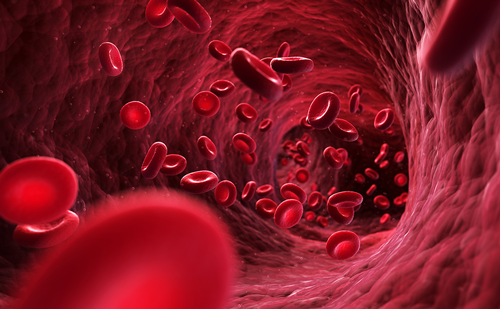The subcutaneous implantable cardioverter-defibrillator (S-ICD) is a disruptive technological change in our approach to ICD implantation avoiding the Achilles’ heel of the transvenous lead impantation in patients without pacing indications. The evidence base has been significantly expanded over the past 12 months with growing experience and longer-term follow-up.
In 2015, a pooled analysis of the two largest S-ICD series: the IDE Trial and EFFORTLESS Registry, evaluated the longer-term safety and efficacy of the S-ICD with 2 years’ follow-up.1–3By pooling these studies, the outcomes of 882 patients over 651±345 days (1,571.5 patient–years) give further support for the use of the S-ICD in appropriate patients.3 The success of shock therapy after up to five shocks for ventricular tachyarrhythmias was 98.2%, and the estimated 3-year inappropriate shock rate was 13.1%. The estimated all-cause mortality was 4.7% at 3 years with a total of 26 deaths, which was 2.9% of patients who underwent implantation, with only one known arrhythmic death (0.1%) due to Loeffler’s syndrome. Device-related complications occurred in 11.1% of patients at 3 years, but there was no S-ICD-related endocarditis, bacteraemia or lead failure. Indeed, data examining the learning curve of implantation demonstrates that the implant complications are improved with experience: the 6-month complication rate decreased by quartile of enrolment (Q1: 8.9%; Q4: 5.5%). The greater utilisation of dual-zone programming to minimise inappropriate shocks for supraventricular tachycardia (SVT) and T wave oversensing reduced inappropriate shocks by 35% in the pooled analysis from 6.9% in the first quartile of implanted patients to 4.5% in the final quartile. Furthermore, with an increased understanding of patient selection and the utilisation of post-implant exercise testing, to minimise T wave oversensing at increased heart rates in young active patients (± pre-implant exercise testing in rare disease cases e.g. hypertrophic cardiomyopathy), inappropriate shock rates can be further reduced. This is evident in the pooled analysis where once programming changes were made, inappropriate shocks rates declined to <2% per annum indicating patient screening and electrocardiogram (ECG) vector selection are critical in achieving optimal S-ICD device programming. Challenges remain to minimise the risk of T wave oversensing particularly in patients with complex congenital heart disease and cardiomyopathies and it may be necessary to consider alternative sensing electrode placement or integration of ECG sensing vectors to minimise this in certain cases.7
A question regarding the subsequent need for pacing in S-ICD recipients was answered in the pooled cohort with 3/882 requiring system replacement for right ventricular pacing or cardiac resynchronisation therapy (CRT) indications. The main determinants of pacing requirement are PR prolongation, New York Heart Association (NYHA) class and QRS width.4 The current selection of S-ICD patients indicates that conversion to a transvenous system is not a significant matter at this stage.
A further factor related to S-ICD has been the question of lack of anti-tachycardia pacing (ATP) to terminate (VT). Patients are excluded from S-ICD if they develop sustained monomorphic VT and in the pooled analysis 1.5% patients received more than one shock monomorphic VT. Applying the Painfree Rx II ATP efficacy to this group, this may have been reduced to 0.6% of the S-ICD population.5With the advent of Multicenter Automatic Defibrillator Implantation Trial – Reduce Inappropriate Therapy (MADIT-RIT), ICD programming is moving towards more prolonged detection times for VT and higher rate cut-offs as there is now evidence of a potential mortality benefit in avoiding shocks for VT.6Since the S-ICD is programmed at such higher rate cut-offs with a mean time to therapy of 15 seconds, there are some parallels with MADT-RIT programming. This controversial lack of antitachycardia pacing (ATP) in S-ICD has initiated two studies to address the question – A PRospective, rAndomizEd Comparison of subcuTaneOous and tRansvenous ImplANtable Cardioverter Defibrillator Therapy (PRAETORIAN), which is examining the outcomes of patients where there is equipoise between transvenous implantable (TV-ICD) versus S-ICD implantation utilising MADIT-RIT high rate and prolonged detection therapy criteria. The Untouched Registry is examining shock rates compared with the MADIT-RIT outcomes in primary prevention patients with ejection fraction <35%. These studies will provide important data on the exact role of ATP in these populations and whom to select for a device that can deliver ATP. Indeed, this subject is becoming an active field of research through the evolution of leadless pacing technologies, which are emerging this year.8,9Indeed, preliminary reports demonstrate that these systems could be integrated.10 It is highly likely that we will soon have the opportunity to deliver back-up bradycardia pacing and ATP in subgroups of S-ICD recipients. The on-going PRAETORIAN and Untouched studies will inform optimal patient selection.
At the time of writing we are seeing an exponential increase in S-ICD implantation in Europe and the US. It has been endorsed by the recent European Cardiac Society Guidelines on Ventricular Arrhythmias & Sudden Cardiac Death as a Class IIa indication for patients with an ICD indication without the need for pacing, CRT or ATP.11Indeed, the Class IIb indications say that “it may be considered as a useful alternative to the transvenous ICD system when venous access is difficult, after the removal of a transvenous ICD for infections or in young patients with a long-term need for ICD therapy”. The second-generation device has meant a 20% thinner generator, improved battery longevity and wireless remote monitoring making implantation and follow-up more straightforward. The next few years will inevitably see greater integration of leadless pacing and subcutaneous ICD systems. As nanotechnology and external power sources evolve, multi-chamber pacing using such leadless pacing ‘seeds’ may mean that transvenous devices will become obsolete as these implant and sensing technologies develop over the next century.12







